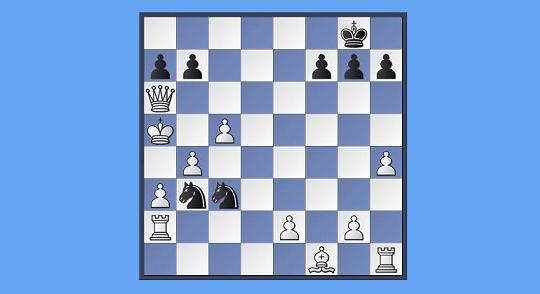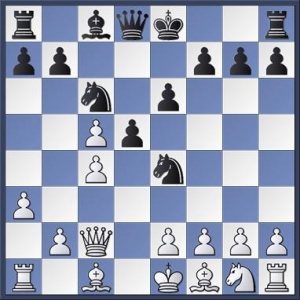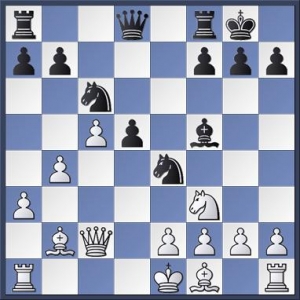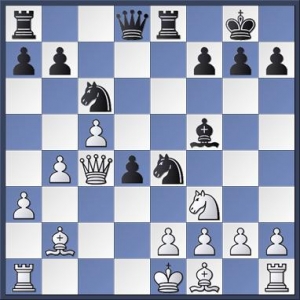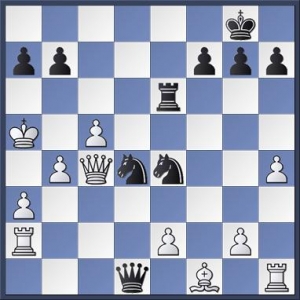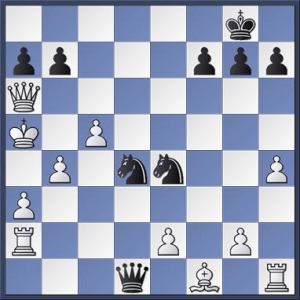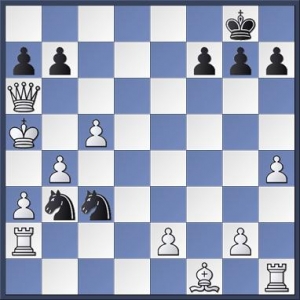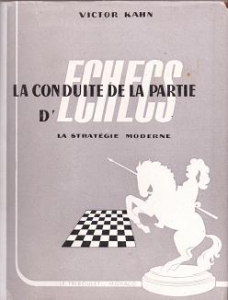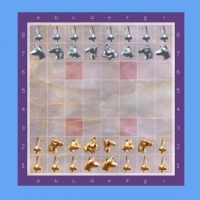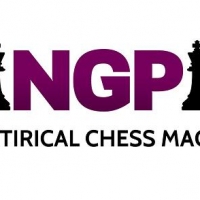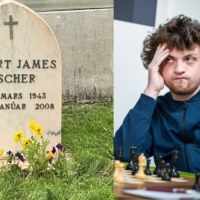Victor Kahn
Many games are lost, by amateurs and masters alike, on account of poor development.
The main cause is loss of time from either launching a premature attack or capturing pawns in the opening.
When the hasty attack has petered out or when a pawn has been won, the opponent emerges with a lead in development. So he launches a counter-attack – which is almost always successful if the over-ambitious player hasn’t castled his king into safety.
Some modern opening lines, although based on a deep strategic idea, only work thanks to precise tactics whose ramifications must be checked by careful analysis. To play these lines without having scrutinized them beforehand is a recipe for disaster.
This game is a typical illustration of the danger of blithely trotting out the early moves of a fashionable line without having studied it thoroughly.
B.H. Wood – P. Devos
Baarn 1948
Nimzo-Indian Defence (First beauty prize)
1 d4 Nf6 2 c4 e6 3 Nc3 Bb4 4 Qc2 d5 5 a3
Gaining the two bishops.
5…Bxc3+ 6 Qxc3 Ne4 7 Qc2 c5 8 dxc5 Nc6
Not 9 b4? Qf6! etc.
Or 9 e3 Qa5+ 10 Bd2 Nxd2! 11 Qxd2 dxc4! 12 Qxa5 Nxa5 13 Rc1 b5! 14 cxb6 Bb7 and White has no advantage (Fine–Najdorf, Stockholm 1937).
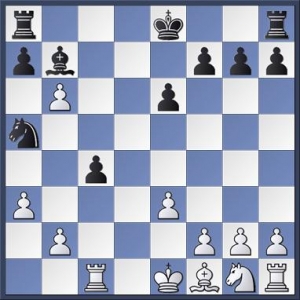 [A recent example confirms this judgement: 15 Nf3 Ke7 16 Nd2 axb6 17 Bxc4 Rhd8 18 Bb5 Rac8 19 Rc3 Rxc3 20 bxc3 Rc8 21 c4 Bxg2 22 Rg1 Bd5 23 Rg4 h5 24 Rh4 Bc6 25 Rxh5 Bxb5 26 Rxb5 Nxc4 27 Nxc4 Rxc4 28 Rxb6 1/2-1/2 Nakamura–Ponomariov, FIDE Grand Prix, Paris 2013 -Ed.]
[A recent example confirms this judgement: 15 Nf3 Ke7 16 Nd2 axb6 17 Bxc4 Rhd8 18 Bb5 Rac8 19 Rc3 Rxc3 20 bxc3 Rc8 21 c4 Bxg2 22 Rg1 Bd5 23 Rg4 h5 24 Rh4 Bc6 25 Rxh5 Bxb5 26 Rxb5 Nxc4 27 Nxc4 Rxc4 28 Rxb6 1/2-1/2 Nakamura–Ponomariov, FIDE Grand Prix, Paris 2013 -Ed.]
9…exd5 10 Nf3
[10 e3 O-O 11 Nf3 Bf5 12 Bd3 Qa5+ 13 Ke2 Rfe8 14 Rd1 Bg4 15 b4 Qc7 16 h3 Bxf3+ 17 gxf3 Ng5 18 Bb2 d4 19 h4
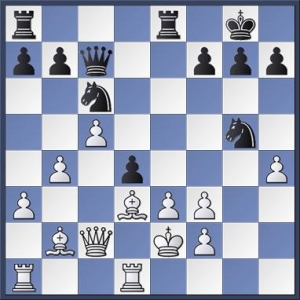 [19…Rxe3+ 20 fxe3 Qh2+ 21 Kf1 Qh1+ 22 Kf2 Qh2+ 23 Kf1 Qh1+ 24 Kf2 Qh2+ was drawn in Nakamura–Karjakin, Wijk aan Zee 2014 -Ed.]
[19…Rxe3+ 20 fxe3 Qh2+ 21 Kf1 Qh1+ 22 Kf2 Qh2+ 23 Kf1 Qh1+ 24 Kf2 Qh2+ was drawn in Nakamura–Karjakin, Wijk aan Zee 2014 -Ed.]
10…Bf5 11 b4! O-O!
If 11…Ng3 12 Qb2 Nxh1 3 Qxg7 Rf8 14 Bh6 Qe7 15 Qxf8+ Qxf8 16 Bxf8 Kxf8 17 g3 followed by Bg2 with a winning ending for White.
12 Bb2
In the game Euwe–Najdorf Mar del Plata 1947 Black played the weaker 12…Ng3 and after 13 Qc3 d4 14 Nxd4 Nxd4 15 fxg3? Nc2+ 16 Kf2 Qg5 17 h4 Qh6 18 g4 Be4 19 g5 Qg6 20 Rd1! White achieved a winning position. The text move is a novelty.
[Nowadays 12…b6 and 12…Re8 are the most popular choices -Ed.]
13 Qc4! Re8!
He had to play 14 Bxd4 Be6! (not 14…Nxd4 15 Qxd4!)
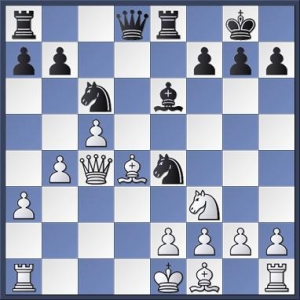 15 Qd3 Bf5 with a repetition of moves. If 16 Qd1 Black’s superior development compensates for the pawn deficit.
15 Qd3 Bf5 with a repetition of moves. If 16 Qd1 Black’s superior development compensates for the pawn deficit.
14…Qf6!
Eyeing the undefended Bb2 and the f2 pawn.
15 Ra2
Or 15 f3? Qh4+.
15…Be6! 16 Nxe6 Qxf2+
The attack is decisive.
17 Kd1
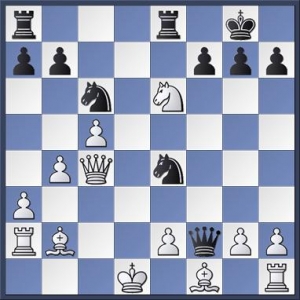 17…Rxe6 18 Bc3 Rd8+ 19 Kc2 Qe3 20 h4 Rd2+! 21 Bxd2 Qxd2+
17…Rxe6 18 Bc3 Rd8+ 19 Kc2 Qe3 20 h4 Rd2+! 21 Bxd2 Qxd2+
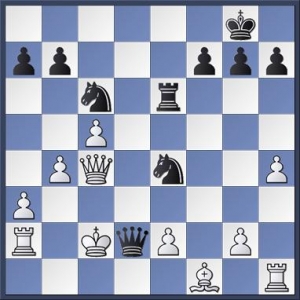 22 Kb3 Nd4+ 23 Ka4 Qd1+ 24 Ka5
22 Kb3 Nd4+ 23 Ka4 Qd1+ 24 Ka5
Magnificent.
26 Kxa4 Nc3+ 27 Ka5 Nb3 mate
A pure, problem-like mate.
Translated from the French with our comments in brackets.
Victor Kahn, La Conduite de la Partie d’Echecs: La Stratégie Moderne (Monaco: Le Triboulet, 1952), pp.76, 88–90.

